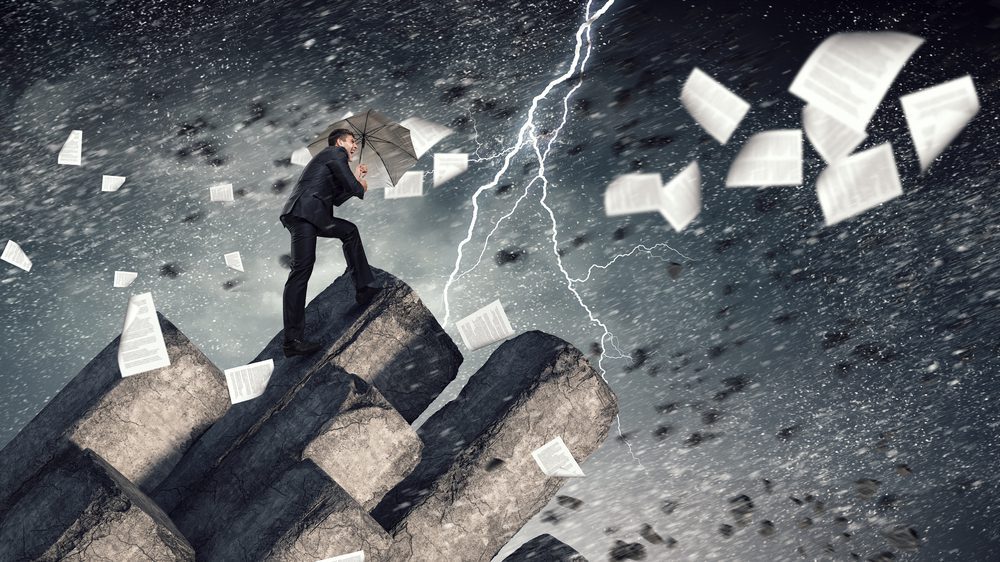Advertiser Disclosure: Many of the companies featured here provide compensation to us. This is how we maintain our free service for consumers. Compensation, along with hours of in-depth editorial research, determines where & how companies appear below.
The banking industry is facing a crisis that is worsening by the day. Recent reports show that US banks are bleeding deposits at an unprecedented rate. During the week ending March 22, a whopping $126 billion was pulled out of US banks, adding to the $98.4 billion that was withdrawn the previous week.
This massive deposit outflow creates a serious challenge for banks as they try to balance the need to retain customers with the need to remain profitable. Unfortunately, US banks are sitting on a massive mountain of unrealized losses, which could make it difficult for them to meet the demands of their depositors. In this blog post, we will delve deeper into the banking crisis, its causes, and its potential implications.
The Impact of the Credit Crunch on Debt Consolidation Loans and Personal Finances
The US banking industry is currently facing a major credit crunch, with rising deposit outflows, tightening of credit conditions, and a mountain of unrealized losses threatening the entire economy. This situation will have a significant impact on consumers’ personal finances and access to debt products, such as debt consolidation loans.
What are Debt Consolidation Loans?
Debt consolidation loans are a popular way for consumers to manage their debt. These loans allow individuals to combine multiple debts into one payment with a lower interest rate, reducing their monthly payments and making it easier to manage their debt. However, with the current credit crunch, it may become more difficult for consumers to obtain these loans.
How Will the Credit Crunch Affect Debt Consolidation Loans?

Credit card debt is one of the most common types of debt that consumers look to consolidate. With a debt consolidation loan, individuals can pay off their credit card debt and consolidate it into one loan with a fixed monthly payment and a lower interest rate. However, with the tightening of credit conditions, it may become more challenging for consumers to find lenders that offer debt consolidation loans at favorable interest rates.
Personal loans are another option for consolidating credit card debt. These loans are unsecured, meaning they do not require collateral, such as a home or car. However, with the tightening of credit conditions, lenders may be more hesitant to offer personal loans to consumers with lower credit scores or high debt-to-income ratios. Consumers may also face higher interest rates and origination fees, making debt consolidation loans less attractive.
Home equity loans are another option for debt consolidation. These loans use the equity in a home as collateral, allowing consumers to borrow against the value of their home. However, with the current credit crunch, home equity loans may be more difficult to obtain, especially for individuals with lower credit scores or limited equity in their homes.
What Can Consumers Do?
Despite the challenges of the credit crunch, there are still options available for consumers looking to consolidate their debt. One option is a balance transfer credit card, which allows consumers to transfer high-interest credit card debt to a card with a lower interest rate. However, consumers must be aware of any balance transfer fees and the length of the introductory rate period.
Credit counseling is another option for consumers struggling with debt. Credit counselors can work with consumers to develop a debt management plan that includes consolidating debt and negotiating lower interest rates with creditors. While credit counseling may not be suitable for everyone, it can be a helpful resource for individuals with high levels of debt.
Consumers may also consider a personal loan, even with higher interest rates and fees. By consolidating their debt into one loan, consumers can simplify their monthly payments and potentially pay off their debt sooner. However, consumers must carefully evaluate the terms of the loan, including the interest rate and repayment period, to ensure it is worth the cost.
Finally, consumers may consider federal student loan consolidation for their student loans. Federal student loan consolidation allows borrowers to combine multiple federal student loans into one loan with a fixed interest rate. While this option may not be suitable for all borrowers, it can simplify monthly payments and potentially lower interest rates.
Managing Personal Finances in the Face of the Credit Crunch
The credit crunch in the US banking industry will have a significant impact on consumers’ personal finances and access to debt consolidation loans. While options may become more limited and more expensive, there are still resources available to help consumers manage their debt, including balance transfer credit cards, credit counseling, personal loans, and federal student loan consolidation. Consumers must carefully evaluate their options and the terms of any loans to ensure they are making the best decision for their financial situation.
The Rising Deposit Outflow

During the last two weeks of March, US bank lending contracted at the fastest rate ever recorded, indicating a tightening of credit conditions. This is a worrying trend, especially in the wake of several high-profile bank collapses. Small banks have been hit the hardest, with commercial bank lending dropping nearly $105 billion in the two weeks ending March 29th, the most significant drop since 1973.
Even before the recent banking industry turmoil, commercial real estate (CRE) was facing risks from long-term trends such as remote work, which threatens the office sub-sector. Moreover, the CRE sector is now facing a huge refinancing wall, with more than half of the $2.9 trillion in commercial mortgages up for refinancing in the next couple of years.
Even if current rates stay where they are, new lending rates are likely to be 3.5 to 4.5 percentage points higher than they are for many of CRE’s existing mortgages. Commercial property prices have already turned down, and Morgan Stanley analysts forecast prices could fall as much as 40%, rivaling the decline during the 2008 financial crisis.
The Unrealized Losses
US banks are sitting on a massive mountain of unrealized losses, which could make it difficult for them to meet the demands of their depositors. A study released on March 13th found that actual losses to bank security holdings were $780 billion, not $620 billion as estimated by the FDIC. But the authors went deeper, noting that loans, like securities, also lose value when interest rates go up.
They found that total unrealized losses, as of December 2022, were $1.7 trillion, which is comparable to the total equity in the entire banking system. When depositors start pulling their money out of banks, the banks can be forced to sell assets to have enough cash. Unfortunately, selling assets at a loss to cover withdrawals could make it even harder for banks to remain profitable.
Implications for the Economy
The credit crunch that the US banking industry is now experiencing will have enormous ramifications for the entire economy. When consumers have access to less credit, they spend less money, and when consumers spend less money, businesses bring in less revenue, which could lead to layoffs.
When workers get laid off, they get behind on their debts, and that creates even more stress on the banks. This new credit crisis threatens to spiral out of control. Fed officials insist that everything is fine, but the rising deposit outflow, tightening of credit conditions, and unrealized losses suggest otherwise.

The US banking industry is in crisis, and it’s getting worse by the day.
US banks are bleeding deposits at an unprecedented rate, and small banks are being hit the hardest. Commercial real estate is facing significant risks from long-term trends, and the sector is now facing a huge refinancing wall. US banks are sitting on a massive mountain of unrealized losses, which could make it difficult for them to meet the demands of their depositors.
The credit crunch that the US banking industry is now experiencing will have enormous ramifications for the entire economy. The implications for businesses, consumers, and the real estate industry are already being felt. When consumers have access to less credit, they spend less money, and businesses bring in less revenue, which could lead to layoffs.
When workers get laid off, they get behind on their debts, and that creates even more stress on the banks. The banking crisis has made a recession more likely, according to JPMorgan Chase and Co’s Jamie Diamond. The failures have provoked lots of jitters in the market and will cause some tightening of financial conditions as banks and other lenders become more conservative.
The Federal Reserve was warned not to raise interest rates so quickly, but they did, and now they have broken the entire banking system. Fed officials insist that everything is fine, but the rising deposit outflow, tightening of credit conditions, and unrealized losses suggest otherwise.
James Bullard, the Saint Louis Fed chief, seems convinced that interest rates should go even higher, and that demand for loans is still strong, while financial conditions have become tighter. Bullard said that the stress is low compared to what was seen during the 2007-2009 financial crisis. He said the Fed’s efforts to calm financial strains by introducing a new landing facility for banks appear to be working.
Conclusion
In conclusion, a major credit crunch has already begun in the US banking industry, with a rising deposit outflow, tightening of credit conditions, and a mountain of unrealized losses that threaten the entire economy. Small banks are being hit the hardest, and commercial real estate is facing significant risks from long-term trends, including remote work.
The banking crisis has made a recession more likely, and businesses, consumers, and the real estate industry are already feeling the impact. The Federal Reserve’s decision to raise interest rates quickly has exacerbated the situation, and Fed officials insisting that everything is fine is a cause for concern. It’s clear that the US banking industry needs urgent attention, and steps must be taken to address the situation before it spirals out of control.




